Dogs of the British Isles
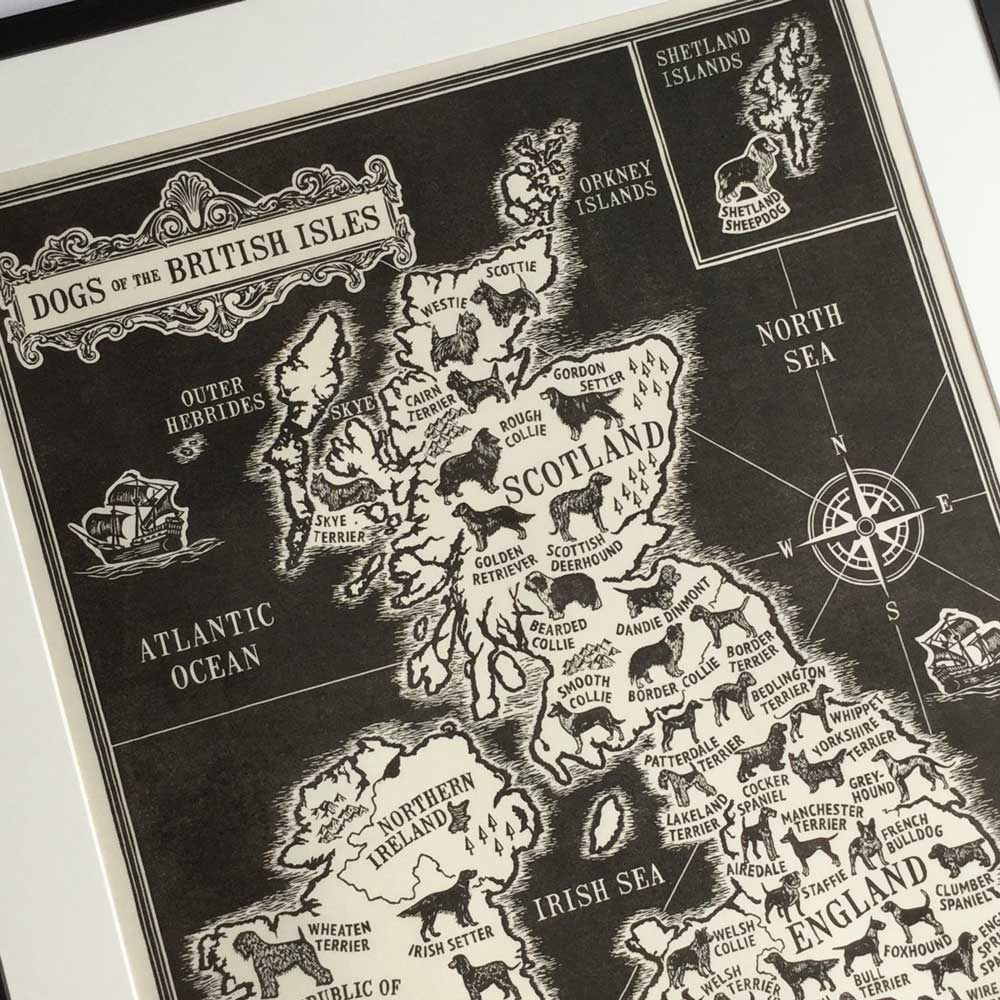

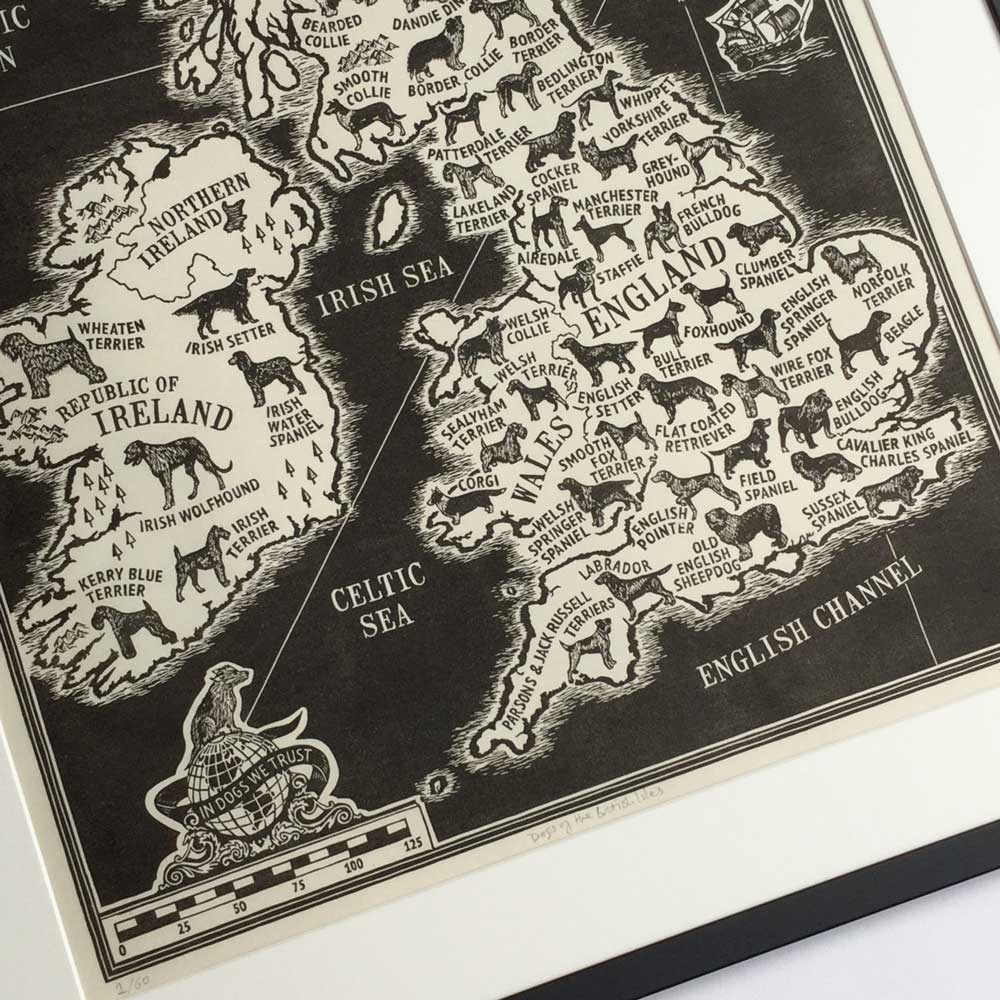
Inspiration
When I first had the idea for this print, I had doubts about the feasibility of carving the dogs and letters at such a small scale. I debated about whether to create it as a screen print or even as a Giclee print of my original illustration, but lino is "my thing" and I wanted to push myself and at least try to see if it was possible for me to carve and print successfully at this size and level of detail. I found it was best not to look to far ahead in the process and just concentrate on the immediate task ahead, carving one letter and one dog at a time! My perseverance and patience were certainly tested in the creation of this print but as President Theodore Roosevelt said, "Nothing worth having was ever achieved without effort"
From nobility and royalty to the working class, farmers and fishermen, the people of the British Isles were prolific and dedicated dog breeders to whom we can attribute a disproportionate number of breeds that we know and love today. Depending on the information source, it is estimated that around 25% of all recognised dog breeds in the world originated in the British Isles ... around some 90 breeds, some of which are now under threat of extinction. This map features 54 breeds, both those that have originated in the British Isles and some breeds, that despite more ancient origins outside these islands, were developed into the breed standard we know today by the people of the British Isles.
Design
I wanted to create a large vintage style map that celebrated the dog breeds that have originated or developed in the British Isles. As a starting point I explored how old maps were drawn and chose some of the typical decorative elements that I wanted to include on my print. It was important to me that my map was correctly drawn and scaled from a geographical point of view.
I love the decorative flourishes and ornamental details that cartographers of the 18th and 19th centuries used when creating maps and I wanted to use these classical elements in this print. Examples are the decorative cartouche around the title of the map, the compass and galleons and the antique ornamental scale in the bottom left corner.
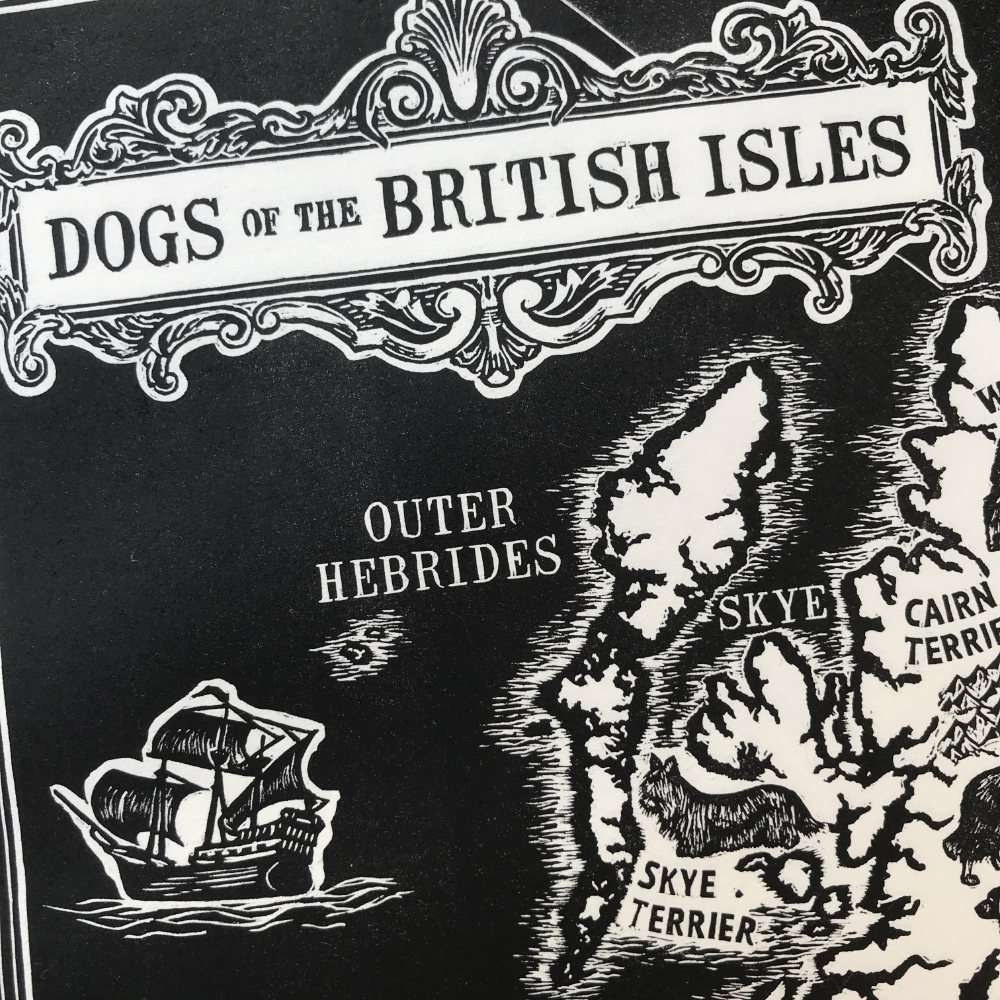
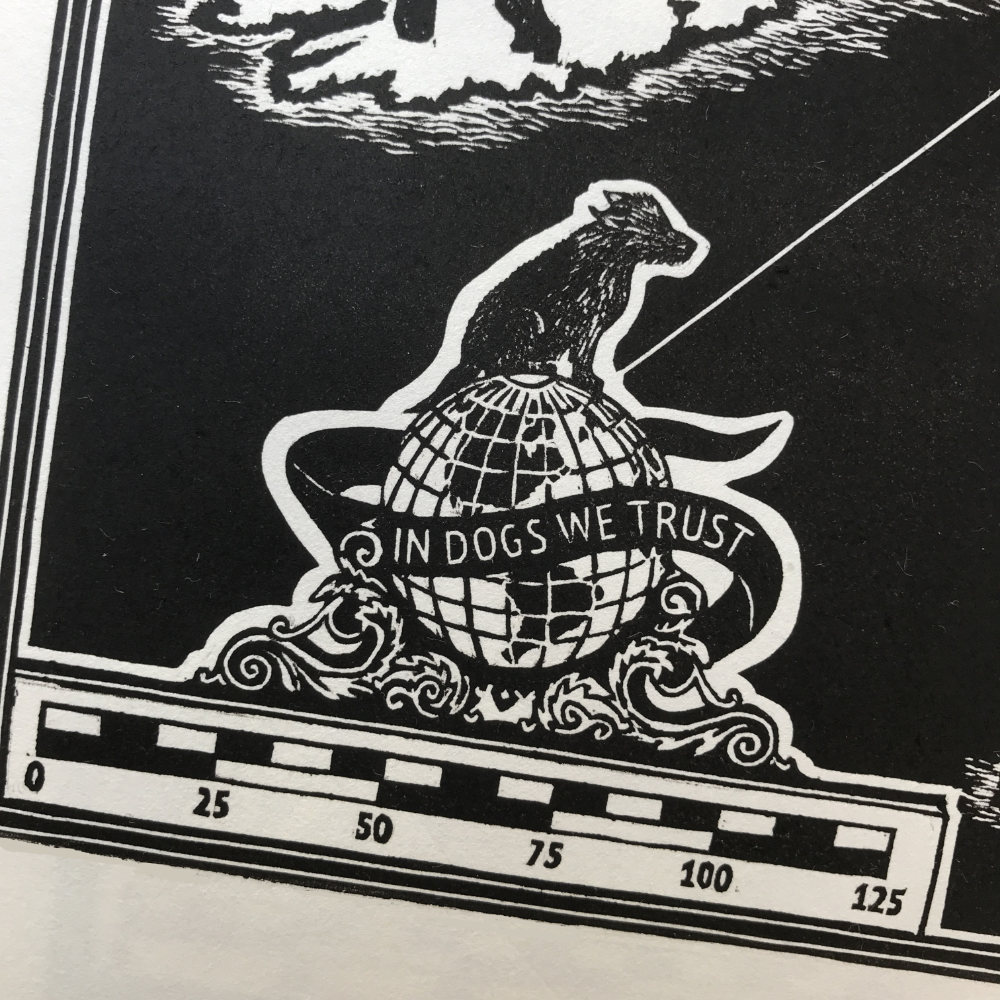
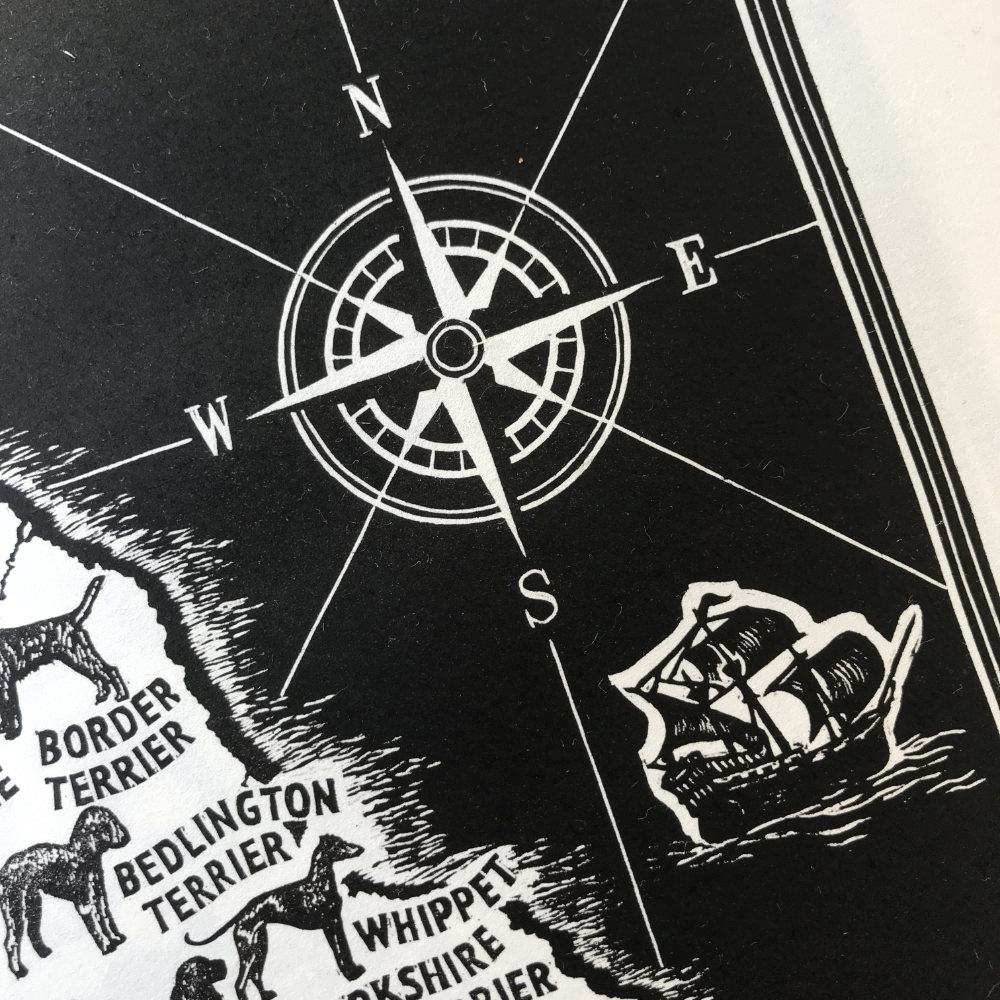
I then reseached the dog breeds that are closely associated with the British Isles. I had to make some difficult decisions about which breeds I wanted to feature on my map as there wasn't space to include all the native breeds. I tried to choose a mix of popular and rare breeds, some of which are now sadly endangered due to declining popularity.
Some breeds have a clear heritage and but the origin of many is the subject of some speculation. For example, I included the Labrador despite many sources indicating that it originated in Newfoundland. However there is evidence that there were no indigenous breeds in Newfoundland and they were most likely to have been brought over with European settlers, many of whom were from south-west England. Labradors did indeed then develop in Newfoundland for a few hundred years but came full circle and were bought back to England in the 1800s where two English aristocrats laid the foundation for the breed as we know it today.
Once all the decisons had been made, I got down to the serious business of drawing the map, the dogs, the lettering and decorative elements.
Making the lino plate
Once I was happy with the whole design, I had to transfer it onto the lino (in reverse) so I could carve it out. I tried several transfer methods (the most successful of which was the xylene transfer method from a laser printed copy of the design) but the large size of the print and the fine detail got the better of me, so I decided to get it screen printed onto the lino. I stained the lino red to make it easier to see where I had carved.
Carving the design into Lino to create a printing plate was a real challenge, not just because of the large size of the print, but also due to the finely detailed dogs and carving lettering only a few millimetres high. Carving the plate took well over 60 hours, using my extra strong glasses and a magnifying glass! The more time I invested in the carving the plate, the greater the stakes - as one slip of the gouge can be almost impossible to rectify.
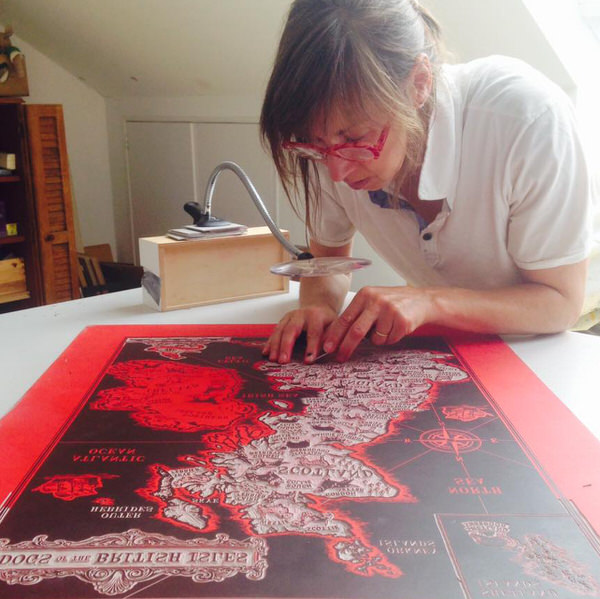
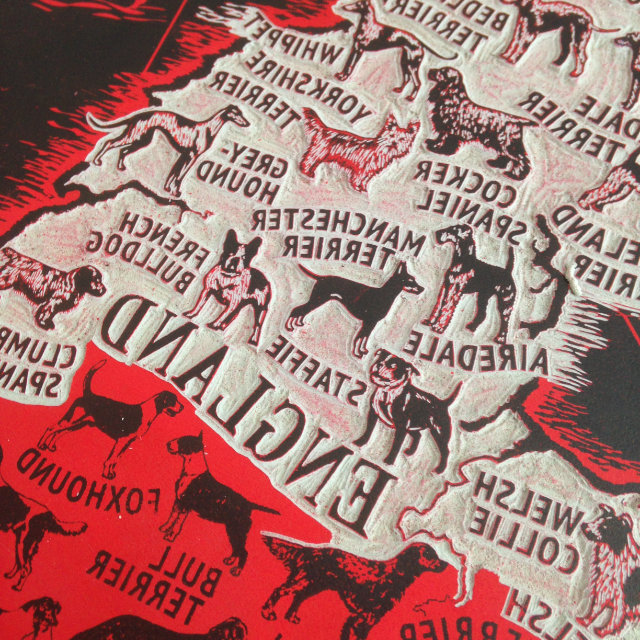
Printing the plate
Once the plate was ready, I made some test prints on different Japanese papers. I was looking to see how the paper performed for several criteria, such as ease and even-ness of ink transfer (especially in the solid black areas) and the weight, colour and texture of the paper. I chose the Awagami Bunkoshi paper, a medium weight paper with a natural creamy off white colour.
The main challenge in printing the plate without a press, apart from its large size (my press is not large enough to take the plate), was the difficulty getting a good even print in the solid black areas (the sea) whilst retaining sharp detail in the dogs and lettering.
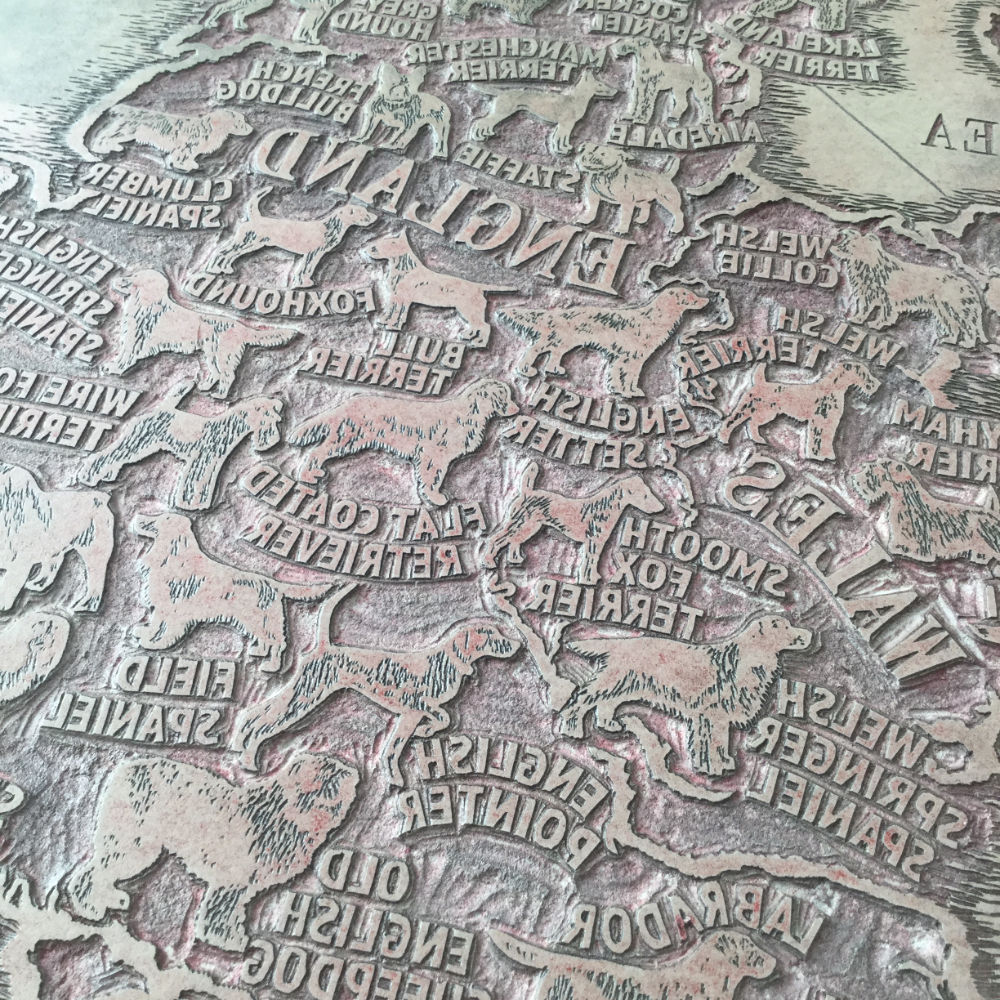
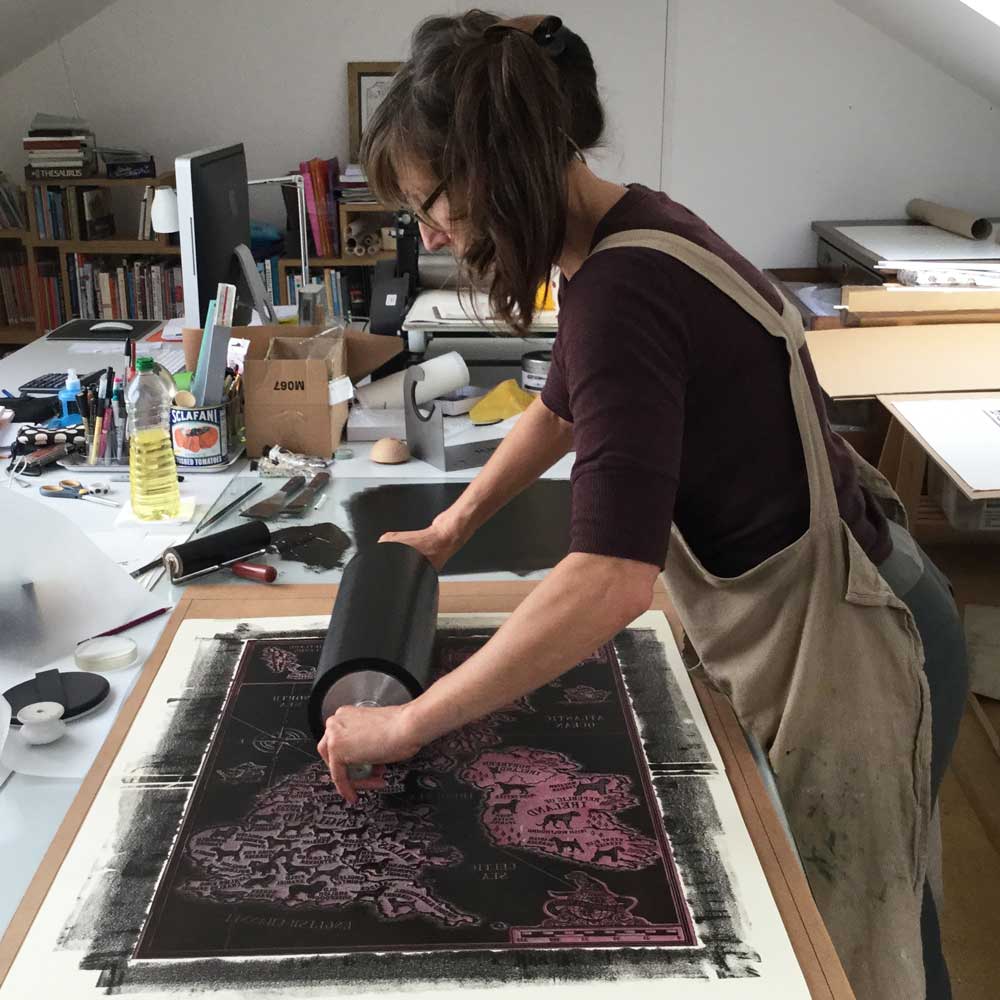
Getting a good result depended on perfecting the amount of ink on the plate in the different areas and varying the printing pressure using various hand tools (a combination of a Japanese ball bearing baren, convex glass lens and my trusty porcelain door knob). Each print took well over an hour to print by hand and the combination of maintaining sufficient pressure to transfer ink evenly, with repetitive circular motions using the hand tools over that time meant that it was also physically very demanding. As I was aiming for an edition of 60 prints, I decided that if I was to maintain my sanity and avoid repetitive strain injury, I needed to find a press large enough to accommodate the plate and paper.
Whilst removing a good deal of the physical strain of printing, a press still requires a good deal of (for want of a better word) "fiddling about" to get a good print. The strong even pressure offered by a press is great for helping to achieve solid areas of flat colour (like the black sea in this print) but such pressure over the more delicate areas, such as the dogs and lettering, can cause smudging and blurring. This is where hand printing was beneficial as it was possible to press harder on the areas of solid colour and go lighter on the dogs and lettering.
The edition of 60 prints was printed with the help of master editioner Lizzie Meakin on her press - a converted mangle - thus saving my sanity and shoulder from further aches and pains!
This print is now sold out however a fine art print of the original is now available


